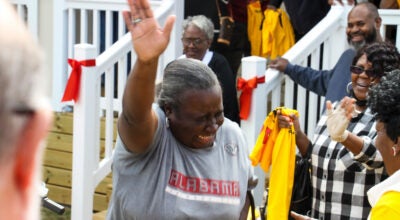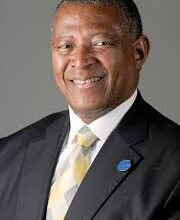Selma nurse battles breast cancer
Published 11:03 pm Saturday, October 26, 2013
She didn’t want to believe it. She thought maybe the lump she found in her breast was a cyst.
Tipton Middle School nurse Bernice Moore didn’t want to face the possibility that it was a cancerous tumor, and she could have a life-threatening illness.
“Up until my diagnosis, I told myself it was not breast cancer,” Moore said. “There is no history of it in my family, and my lump didn’t hurt. It usually doesn’t hurt if you have breast cancer.”
After a diagnostic mammogram and biopsy, doctors revealed to Moore on Oct. 8, 2011 that she was in stage 2 of breast cancer.
“Those are the worst words you can hear,” Moore said.
“I was shocked. It’s something I’ll never forget.“
Moore, who has been cancer free since Nov. 8, 2011, said it was her faith, family and friends that kept her strong and positive during her walk with cancer.
Her husband of 26 years accompanied her to all of her doctor appointments.
Both he and their two daughters were her caregivers.
The congregation and leaders of her church prayed for her daily.
She even had support and advice from friends, who are also breast cancer survivors.
Not only did the support from her loved ones keep her positive, but the research that was done prior to her diagnosis also lifted some of the burden.
“There were so many before me that had chemotherapy and suffered. Thanks to them and several studies, my time was not as hard as those people,“ Moore said. “I had some difficult days, but I cannot say I suffered too much physical pain.”
Dr. Anita Johnson, the medical director of breast surgical oncology at Southeastern Regional Medical Center, said research has led to new technologies and improvement in existing treatments.
She said intraoperative radiation therapy helps reduce damage to healthy tissue and shortens treatment times.
It allows radiation to be delivered directly to the tumor site after the tumor has been removed. Weeks of traditional radiation can often be replaced with a 30-minute dose of IORT.
“Oftentimes, women who present with late-stage disease were unaware of less invasive treatment options they would have had if they presented at an earlier point of their diagnosis, “ Johnson said.
Moore supported the fight to end breast cancer before her diagnosis, but now it’s more personal.
“I can’t tell you how bad I want there to be a cure for all cancer,” she said. “I still get a little emotional when I think back to it all.”
Selma resident Polly Sellier shares Moore’s passion to find a cure for breast cancer.
February 2013 she was also diagnosed with the stage two 2 of breast cancer, but she is proud to say that she is free of breast cancer now.
She struggled to fight back tears as she explained that people are able survive breast cancer.
“Having breast cancer is not a death sentence,” Sellier said.
According to the American Cancer Society, breast cancer death rates have decreased. The chance of dying from breast cancer is 1 in 36, and there more than 2.8 million breast cancer survivors in the U.S., according to their website.
“Awareness provides education to increased screening rates,” Johnson said. “Early detection increases survival rates.”
Moore also encourages women to get their annual mammograms.
“If you find a lump, that’s a red flag,” she said. Tell somebody. That’s not a secret you want to keep, because knowing soon can save your life.”





